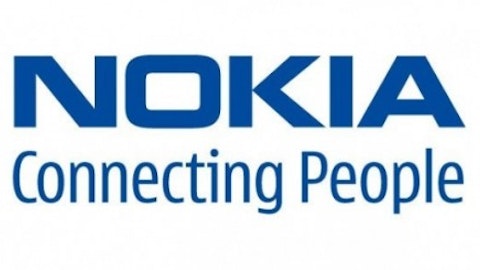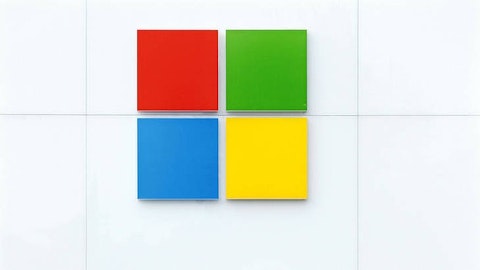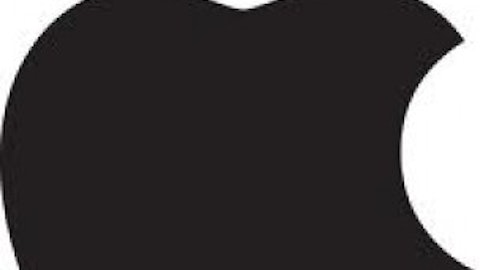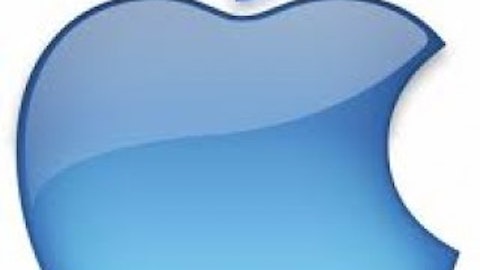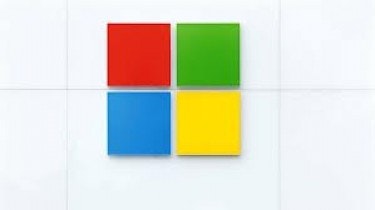
Not all bad
To be sure, the financial news was not all bad, or even mostly bad. Quarterly revenue was up 10.17% year over year and operating income was down only slightly by 5% year over year, excluding the $6.2 billion goodwill impairment charge that Microsoft Corporation (NASDAQ:MSFT) took a year ago to downgrade the value of its Online Services Division (OSD).
Microsoft Corporation (NASDAQ:MSFT) Business Division (home of Office) continues to perform well, with nearly 15% revenue growth year over year and operating income growth of nearly 18%. Server and Tools also did well, with 8% revenue growth year over year and over 10% operating income growth.
However, in areas where there had been high expectations, such as Windows 8, Windows RT, and Windows Phone, the news was disappointing to financial analysts and investors. The earnings presentation delivered a number of unwelcome shocks to the system:
Shock #1: Windows OEM Revenue drops 15% year over year
In the Windows Division (WD), revenue declined sequentially by 22.6% to $4.4 billion, while operating income dropped by a whopping 68% to $1.1 billion. Year over year comparisons for WD weren’t much better: a 6.4% revenue gain offset by a huge 54% operating income drop.
The OEM revenue decline confirmed my hypothesis that Microsoft Corporation (NASDAQ:MSFT) had been pushing discounted Win8 licenses onto OEMs (frontloading) in order to boost claimed sales of Win 8 (recall that it announced that 100 million had been sold as of May).
Right now, corporate licensing of Win7 is carrying the revenue ball for Windows Division, with growth in “double digits.” The company states that 3/4 of enterprise desktops use Win 7, so by the time MS pulls the plug on Win XP support next year, the other 1/4 should be converted, and this “growth” market will go away.
Shock #2: $900 million inventory write-down for Surface RT
Ever since I wrote “Microsoft’s Mobile Crisis” back in November 2012, I’ve been skeptical about Windows on ARM and pointed to signs that Surface RT was not doing well. Since then Surface RT and Windows RT have been suffering a slow, agonizing death by half measures. IDC reported that just 1.8 million Surface RT and Pro tablets were sold in Q4 2012 and Q1 2013. In the same period, Apple Inc. (NASDAQ:AAPL) sold over 40 million iPads.
Windows RT devices were neither simple and intuitive enough to appeal to consumers who might otherwise buy an iPad, nor capable enough to appeal to mainstream Windows users, since WinRT couldn’t run Windows 7 apps, unlike Windows 8 tablets.
Shock #3: Entertainment and Devices Division posts an operating loss
EDD, the home of Xbox and Windows Phone 8, suffered a steep 24% sequential revenue decline as well as a 132% operating income decline. Part of this is just start up costs for the new Xbox One, but clearly Microsoft Corporation (NASDAQ:MSFT) has a profitability problem with Windows Phone. Developing a smartphone OS costs bucks, and right now Microsoft Corporation (NASDAQ:MSFT) has little to show for its investment in Windows 8 Phone.
Because of platform support payments required to bring and keep Nokia Corporation (ADR) (NYSE:NOK) in the W8P fold, Nokia gets W8P for free. This will change if sales volume for Windows Phones ever picks up, but so far they haven’t. Nokia sold 7.4 million Windows Phones in Q2. In Q4 2012 and Q1 2013, about 12 million Windows 8 Phones were sold, according to Gartner research. In the same period, Apple Inc. (NASDAQ:AAPL) sold 85 million iPhones.
Microsoft and its partners such as Nokia Corporation (ADR) (NYSE:NOK) talk a lot about building a viable third mobile ecosystem, but at the rate MS is going, it’s not clear they ever get there. I’ve estimated that to be self-sustaining, a mobile ecosystem needs to have at least 100 million users. At its current rate, it would take a couple more years for Microsoft to achieve that viable ecosystem. Do Microsoft and its partners have two years?
Microsoft’s path forward
Microsoft management and investors are beginning to understand that being an integrated devices company in the Apple vein is not all that easy to achieve. I tend to discount the importance organizational structure in determining the performance of organizations, since I think quality of leadership is far more important, but Microsoft’s re-org probably will help. In any case, I certainly believe that Microsoft can become an effective integrated mobile devices company to rival Apple.
My current pessimism regarding Microsoft Corporation (NASDAQ:MSFT) has to do with a certain doggedness I see in its pursuit of the ARM platform. The impending arrival of Intel Bay Trail processors that will outperform ARM processors in computing speed and energy efficiency will make the effort pointless. There’s much added value in a Windows 8 Pro tablet packing a 64 bit Bay Trail processor that can run nearly the whole ecosystem of Windows 7 software. Such tablets will be as thin as current ARM tablets and have equivalent or better battery life.
There is a question in my mind, which I raised in my recent Intel earnings article, whether the Bay Trail family can be made as cheaply as competing ARM chips. Probably not, but this would be a secondary consideration for Microsoft, since processors aren’t the main cost drivers for tablets anyway, while the touch screens are. Microsoft badly needs a mobile device ecosystem, and the easiest way to achieve one is by bringing the current Windows ecosystem into its mobile platform. That can only be done with Intel.
Similarly Windows 8 Phone could be hosted by an Intel processors derived from Bay Trail, which should be available by the end of the year. Going all Intel would allow Microsoft Corporation (NASDAQ:MSFT) to streamline the development process for its OS and reduce costs.
Although I consider the switch to all-Intel as all but inevitable, it’s not clear when it will occur (the doggedness factor). Unfortunately, Microsoft has achieved just enough progress with Windows Phone to embolden it to continue with ARM. Microsoft could easily waste another year trying to build an ecosystem on what is for Microsoft a dead end platform.
The article A Cold Shower for Microsoft Investors originally appeared on Fool.com and is written by Mark Hibben.
Mark Hibben owns shares of Apple. The Motley Fool recommends Apple. The Motley Fool owns shares of Apple and Microsoft. Mark is a member of The Motley Fool Blog Network — entries represent the personal opinion of the blogger and are not formally edited.
Copyright © 1995 – 2013 The Motley Fool, LLC. All rights reserved. The Motley Fool has a disclosure policy.
